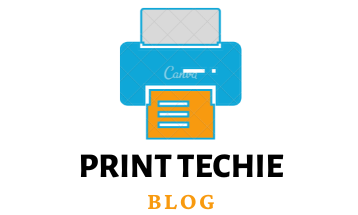One of the most common applications for sublimation printing is on glass, where it can be used to create stunning designs and images that add an eye-catching touch to any room. While there are some limitations and challenges to printing on glass with sublimation, it is a versatile and powerful technique that can create beautiful home decor designs, commercial signage, and more. Whether you are new to sublimation or looking for tips on achieving great results, this guide will help you understand the basics of printing on glass with sublimation and some of the key considerations to keep in mind when designing your projects. Don’t skip this discussion if you’re interested in sublimating on glass.
The answer is yes! Sublimation printing can be used to produce bright and vibrant images on a variety of materials, including glass. To successfully sublimate on glass, you must choose the right type, prepare it properly before printing, use the correct image file format, and use a high-quality sublimation printer and inks. With the appropriate tools and methods, you can make beautiful designs and visuals on glass for many purposes.
How Can You Sublimate on Glass: Step By Step:
There are a few key things to keep in mind when trying to sublimate on glass. First, you’ll need the right sublimation materials. Different types of paper, ink and printers can produce different results, so it is important to use a combination of products specifically designed for this purpose.
Gather your materials.
You will need a piece of glass, a design, sublimation paper, and a heat press. While the printer and heat press is not necessary for sublimation, they will be required if you want to create a finished product. If you don’t have access to equipment, you can bring the design file to a company specialising in sublimated glass and pay them to do it for you.
Clean your glass.
Ensure your glass is clean and free of any dirt or debris. This is especially important if you are printing directly on the glass, as even a speck of dust or debris can cause problems with the final product. You should also ensure that the surface of the glass is completely dry before placing any paper on it, as water can cause problems with adhesion.
Print your design.
Print your design onto the sublimation paper using a sublimation printer. It is a good idea to test print your design on regular paper first, just to be sure that the colours and quality of the final product will look good. Consider using the same printer settings that you will use for actual sublimation printing.
Place your design on the glass.
Place your design on the piece of glass, ensuring that it is centred and there are no air bubbles. The best way to do this is with a taping tool, but you can also use a squeegee or any other flat object.
Heat press your design.
Place the glass in the heat press and apply pressure and heat according to the manufacturer’s instructions. Ensure that the temperature and time settings are appropriate for glass printing, as using too much heat or pressure can cause damage to your design or the glass itself.
Tips for Sublimation on Glass
Choose the Right Glass
The first step to successful sublimation on glass is choosing the right type. Not all glass is created equal, and some types are better suited for sublimation than others. For best results, choose a high-quality, hard-coated white or clear glass.
Prepare the Glass
Once you have the right glass, it’s important to prepare it properly before sublimation. This involves cleaning the glass thoroughly with a mild soap and water solution. Once the glass is clean, thoroughly dry it before proceeding.
Choose the Right Image
The next step is choosing an image you want to use for your project. The image should be high resolution and in a format that can be easily converted into a JPEG or PNG file. Furthermore, the image should be printed after being flipped horizontally.
Print the Image
Once you have your image ready, it’s time to print it onto sublimation paper. Use a high-quality sublimation printer and inks for the best results. When printing, ensure the image is mirror-reversed so it will appear correctly when transferred onto the glass.
Transfer the Image
After your image has been printed, it’s time to transfer it onto the glass. This can be done using a heat press or an oven. If using a heat press, set it to 400 degrees Fahrenheit and place the piece of glass on top of the heat pad. Place the sublimation paper on top of the glass and close the press.
FAQs:
How much time does it take to complete the glass sublimation process?
The time required for the glass sublimation process will depend on several factors, including the type and size of the glass pieces you are working with and the complexity of the design you are printing. Depending on the situation, it may take anywhere from a few minutes to several hours.
Can you do sublimation on glass at home?
Yes, it is possible to do sublimation on glass at home using a standard heat press or an oven. However, you will need access to the appropriate tools and supplies, including a high-quality sublimation printer, paper, and glass pieces. Additionally, it is important to take the necessary safety precautions when doing sublimation on glass at home.
At what temperature does glass transform directly into a gas?
There is no standard temperature at which glass will transform directly into a gas. This process, known as sublimation, generally requires high temperatures and specific conditions to occur. However, different types of glass may require different temperatures and conditions for sublimation.

